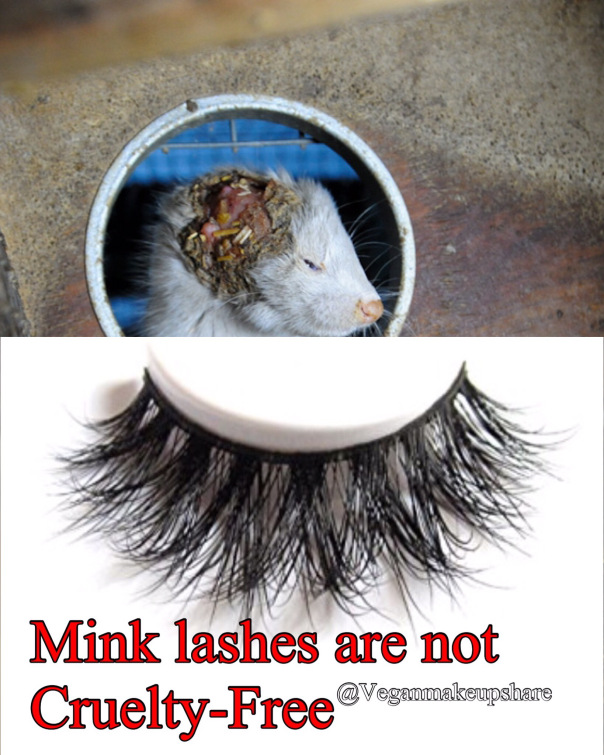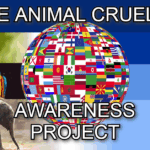In an age where ethical consumption is garnering increased attention, the question of whether mink lashes and leather bags are contributing to animal cruelty warrants a meticulous examination. These luxury items, often heralded as symbols of sophistication and style, mask a disturbing reality rooted in animal exploitation. This discourse invites you to reconsider the true cost of fashion accessories that are deceptively glamorous but ethically questionable.
Mink lashes, prized for their soft, luxe appearance, are often marketed as the epitome of beauty. However, beneath this alluring façade lies a disheartening tale. The majority of mink lashes originate from fur farms where minks endure heinous living conditions. Confined to small cages, these sentient beings are stripped of their natural instincts and social structures. The industry’s assertive push for profit over compassion reveals a troubling dilemma: is the aesthetic allure of faux beauty worth the suffering of these creatures?
The primary method of acquiring mink fur involves lethal practices designed to maximize profit margins. Minks are typically killed using inhumane techniques, such as gassing or electrocution. Such methods underscore the ethical paradox that accompanies the consumption of mink products. While some may argue that the end justifies the means, the inherent suffering inflicted upon these creatures draws a more compelling narrative that demands our attention.
Moreover, the misguided belief that all mink lashes are derived from sources practicing humane treatment is a fallacy. With little to no regulation governing fur production, consumers often find themselves unwittingly supporting animal cruelty. The moral implications of choosing lash extensions that exploit defensive creatures present a pivotal moment for ethical reflection. This begs the question: can true beauty exist alongside such intrinsic suffering?
Similarly, the trend of leather bags further complicates the ethics of luxury fashion. Leather, traditionally perceived as an emblem of durability and elegance, is frequently linked to unsavory practices within the livestock industry. Cows, sheep, and goats raised for leather endure a lifetime of confinement and distress. The sheer scale of the leather industry necessitates an uncomfortable inquiry: at what point does our desire for fashion compromise our moral obligations to other species?
Leather production involves grisly processes that extend beyond mere slaughter. The tanning, dyeing, and treatment of hides generate hazardous waste, significantly impacting local ecosystems. Water pollution, deforestation, and greenhouse gas emissions are unintended consequences of our penchant for leather goods—practices that raise profound environmental concerns. As the wearers of high-end leather, we find ourselves at a crossroads, challenged to choose between aesthetic appeal and environmental stewardship.
This intricate relationship between fashion, ethics, and environmental sustainability forms a mosaic that transcends our understanding of clothing and accessories. The stakes are high, and implications are far-reaching. Every purchase sends ripples through the supply chain, influencing farming practices, animal welfare, and environmental health. A deeper awareness of these interconnected systems can usher in a more conscious consumerism that seeks to align our values with our choices.
As advocates for animal rights and environmental equity, we have the responsibility to seek alternatives that prioritize compassion over cruelty. The marketplace is increasingly accommodating with a surge of innovative, cruelty-free options in both lash and leather products. Synthetic lashes, often made from materials like silk or faux mink, offer an appealing alternative that allows consumers to indulge their aesthetic desires without compromising their ethical standards. These alternatives can provide an equally luxurious experience, devoid of the associated moral quandaries.
In the realm of leather, vegan materials and innovative textiles have emerged to cater to environmentally-conscious consumers. Brands are now producing luxuriously crafted accessories made from sustainable materials that mimic the aesthetic and functionality of traditional leather. By embracing these alternatives, we empower a burgeoning industry that champions humane practices, ultimately challenging the notion that luxury must come at the cost of suffering.
Furthermore, fostering dialogue around these topics can instigate a broader cultural shift. Conversations regarding animal rights and environmental sustainability can no longer exist in silos; they must intertwine and inform consumer choices across demographics. Engaging individuals from all walks of life in candid discussions about the consequences of their purchases has the potential to reshape societal norms surrounding fashion and consumption.
In conclusion, the ethical implications surrounding mink lashes and leather bags compel us to examine the underlying consequences of our choices. While the allure of luxury may entice, the specter of animal cruelty cannot be ignored. The time has come to redefine value—one that encompasses not only aesthetics but also compassion and sustainability. A conscious shift in perspective can facilitate a more harmonious coexistence between fashion and ethical consciousness, ultimately leading to a future where luxury does not equate to loss. For the sake of all beings, let us tread thoughtfully into this conversation, forging a path that champions kindness and reverence for life.






